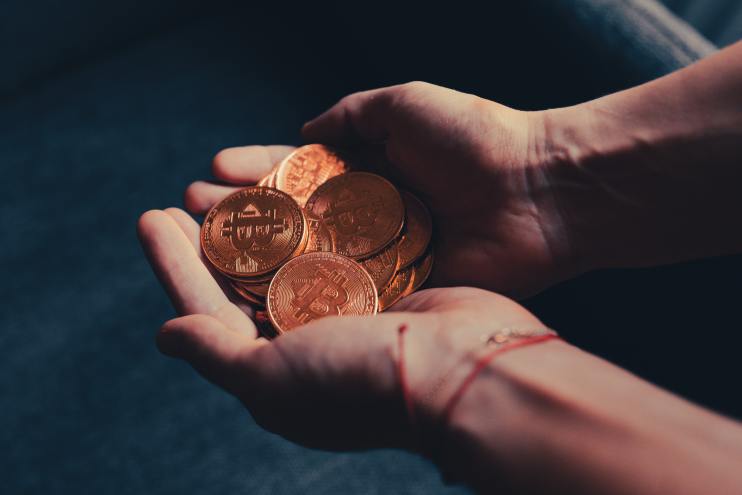Long-awaited Bitcoin upgrade goes live as miners keep stashing BTC

Data from CryptoCompare shows that the price of Bitcoin dropped from around $66,000 to a $57,000 low throughout last week. The drop came shortly after BTC hit a new all-time high near $69,000.
Ethereum’s Ether, the second-largest cryptocurrency by market capitalisation, moved in a way similar to Bitcoin. It started the week at $4,600 and dropped to retest its support at $4,000, which allowed it to move up back to $4,200 at the time of writing.
Headlines in the cryptocurrency space this week were dominated by the launch of a long-awaited upgrade to the Bitcoin network called Taproot. It’s the cryptocurrency’s biggest upgrade in four years, and it went live when the blockchain reached block 709,623.
Taproot introduces Schnorr signatures that can make more complex transactions on Bitcoin, such as those from multi-signature wallets, look like simple transactions. In practice, this will mean greater privacy for users, as they won’t have as much exposure on the public blockchain.
The upgrade also brings in smart contracts, which are self-executing agreements that live on the blockchain. Taproot introduces a new script type called Pay-to-Taproot (P2TR), which unites the functionality of P2PKH and P2SH scripts. As more programmers build on top of the Bitcoin blockchain, its usability grows.
Data from CryptoCompare shows that, over the last five years, forks on both the Bitcoin and ETH networks had a negligible effect on performance over the short term but, as their effects were felt, appear to have helped both BTC and ETH prices surge.
Options for investors to gain exposure to BTC also grew over the week, as less than a month after the first Bitcoin exchange-traded fund (ETF) began trading in the US, investment firm VanEck’s Bitcoin Strategy ETF (XBTF) started trading at Cboe Global Markets. The fund tracks prices for Bitcoin futures at the Chicago Mercantile Exchange (CME).
The ETF is the third to trade in US markets less than a month after the first one was approved. VanEck’s Bitcoin ETF differs from its predecessors for having a lower expense ratio at 0.65% and an effective tax rate of 22.15%.
Despite the available options, Twitter CFO Ned Segal said that investing in cryptocurrencies “doesn’t make sense right now” for the company, as it would have to change its investment policy to hold more volatile assets on its balance sheet and instead prefers to hold assets with less volatility such as securities.
Not everyone is choosing to stay on the sidelines, however, as popular cryptocurrency venture capital firm Paradigm announced a new $2.5 billion fund to invest in crypto companies and protocols. It will work alongside the firm’s existing flagship fund.
Similarly, as the price of Bitcoin drops, large publicly-traded Bitcoin miners are accumulating Bitcoin by raising capital or leveraging their BTC holdings to help cover operating costs rather than selling it for fiat currency. By loaning their holdings to earn fiat currency, they are able to cover operating expenses.
Hut 8 Mining has reportedly been loaning out 2,000 BTC – nearly 40% of its stash – to earn a 2% interest rate. 2,000 BTC is worth around $115 million at current prices, meaning the firm is earning an annualised $2.6 million. The firm’s BTC holdings are behind those of other publicly-traded Bitcoin miners.
A bipartisan team of lawmakers in the US also introduced a bill to narrow some of the cryptocurrency tax reporting rules that were included in the infrastructure bill. The new bill seeks to override a provision that is believed to be too broad, to the point it would stifle growth in the space.
ConstitutionDAO Fails to Buy Copy of US Constitution
Over the week, a new decentralised autonomous organisation (DAO) called ConstitutionDAO was formed to preserve the US Constitution. The DAO set out to pool capital in an Ethereum smart contract to purchase a first-edition printed copy of the document in a Sotheby’s auction.
The rare copy of the Constitution sold for $43.2 million, with the group stopping short of making the winning bid as they needed to account for costs associated with ‘proper care and maintenance’ of the document.
The document is one of only 11 surviving 1787 first-edition copies and was purchased in 1988 by S Howard Goldman for $165,000. Goldman’s wife put it up for auction to raise funds to a charity in her name. ConstitutionDAO wrote in its frequently asked questions section the funds would be redeemable, minus a transaction fee.
The group is now debating what to do with the funds, with some suggesting they should be used for future investments. The DAO is set to make the funds redeemable for investors who want their money back, minus transaction fees.
ConstitutionDAO is based on the Ethereum blockchain, which has seen institutional interest for it grow. Filings with the US Securities and Exchange Commission show that holdings in Grayscale’s Ethereum trust, ETHE, are up 19% in the third quarter of the year.
Francisco Memoria is a content creator at CryptoCompare who’s in love with technology and focuses on helping people see the value digital currencies have. His work has been published in numerous reputable industry publications. Francisco holds various cryptocurrencies.
Featured image via Unsplash.